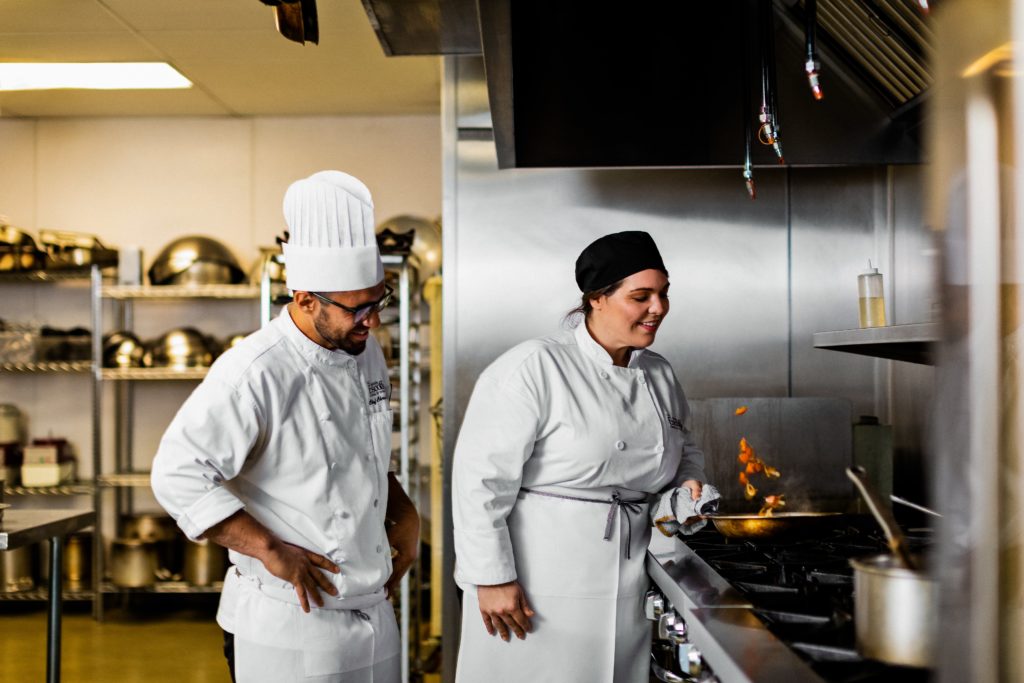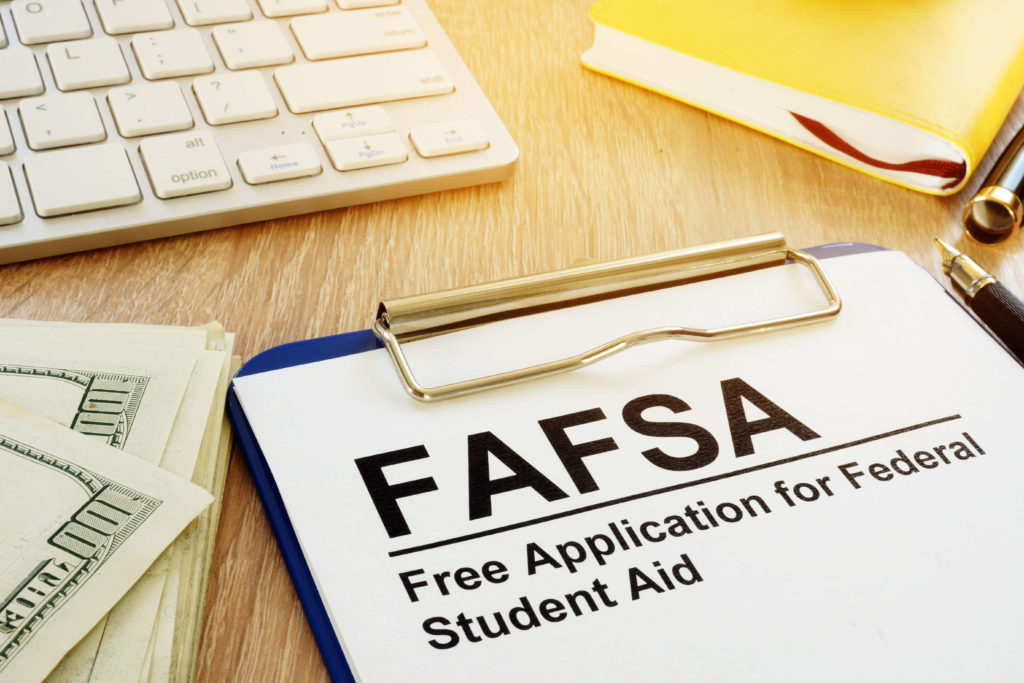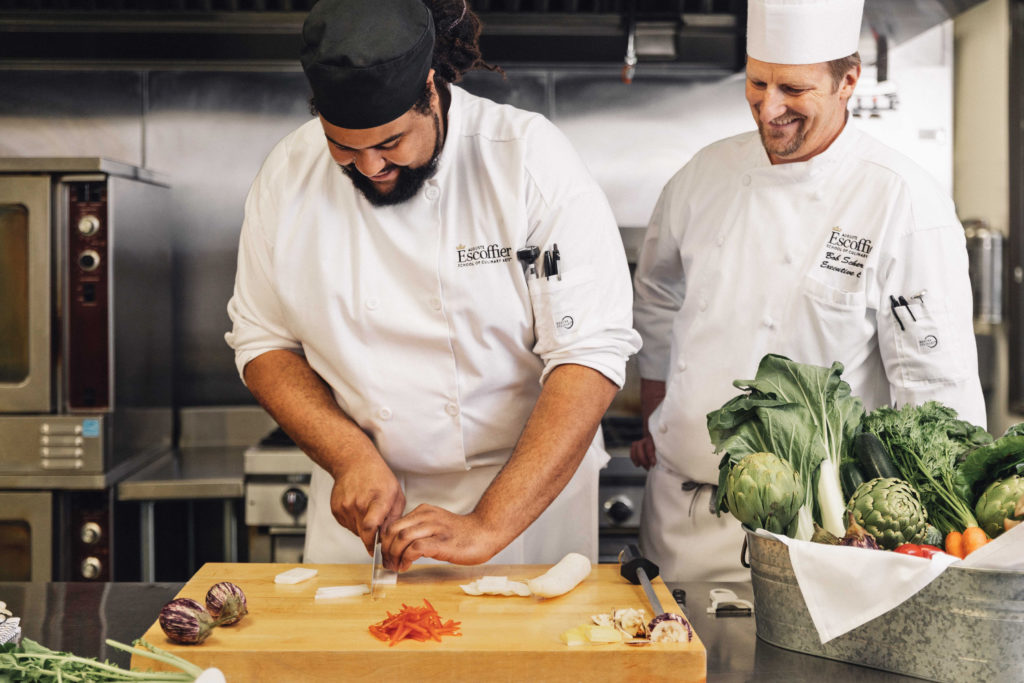Auguste Escoffier School of Culinary Arts Tusion
April 2, 2021
The decision to go to culinary school usually brings up a couple of questions: How much does it cost, and how will you be able to pay for it?
At the time of publishing this article, the tuition for Auguste Escoffier School of Culinary Arts' 60-week Diploma in Culinary Arts and Operations is $17,725.
At first glance, you might think this makes culinary school appear to be out of reach. But the good news is that decades ago, the federal government passed the Higher Education Act of 1965, which, through the Office of Federal Student Financial Aid, helps make college education possible for more than 13 million students each year.
Keep in mind that the actual net cost of school is different for everyone because it depends on your current life circumstances. So in reality, some people will pay more and some people will pay less, based on need and what each individual student is qualified to receive.
We'll unpack this for you below, so that you get a sense of what you will have to pay to get a diploma or degree from Escoffier. Be sure to read everything carefully, including the section titled, "Financial Aid is Available to Those Who Qualify."
But before we get ahead of ourselves, let's understand more about why tuition costs are what they are.

When You Pay Your Tuition and Fees, You Are Paying for Quality Instructors, Cutting-Edge Educational Platforms, Ongoing Research, and More
Why are tuition costs what they are, not just at culinary schools, but at all quality educational institutions? As you'll see, when you invest in a quality education, you're primarily paying for the quality of the faculty and the systems and technologies that deliver the education itself.
Remember, all educational institutions have to pay qualified instructors who have industry experience and/or academic credentials in their respective fields—people who could be earning salaries elsewhere. These are the people who will become your mentors and guides, the people who can help you achieve your culinary career goals. Obviously, you don't want to forgo that, and neither do we!
When you choose a culinary institution for your studies, you want to make sure that you are learning from Chef Instructors who can give you a variety of approaches to success in the culinary arts.
Culinary colleges and schools have to attract culinary professionals who have worked as Executive Chefs and/or who have credentials like Master Baker, Certified Master Chef, Certified Culinary Administrator, and other industry recognitions. You might think of these designations in the culinary industry similarly to the way other industries have credentials such as MBA, CPA, and PhD. It's not exactly the same thing, but you get the idea.

To facilitate one-on-one interactions and personalized feedback, there are technology costs required to build, maintain, and update online learning tools.
Schools must also invest in ongoing research for improving the quality of education itself, so that what is taught is always on the industry's cutting edge.
Finally, national and regional accreditation processes ensure that peer-reviewed industry educational standards are met or exceeded.
Costs That Go Into a Culinary School's Tuition & Fees
Here are just a few of the costs that tuition pays for at culinary school:
- Chef Instructor Salaries
- Learning Technology Platform & Tools
- Curriculum and Course Planning & Development
- Kitchen Toolkit
- Textbooks
- Externship Program Services
- Career and Job Placement Services
- Alumni Programs & Networking Platforms
- Other Staff (Admissions, Counseling & Coaching, etc.)
How Can You Pay for Culinary School?
Now that we've covered what goes into tuition costs, let's dive into the logistics of paying for culinary school.
We've already covered the fact that, for many, instead of paying $17,725 in tuition and fees, the actual net cost could be much lower—$8,311 in 2019 for the "average" person. Again, in your specific situation the total might be higher or lower than that, but let's talk through the "average" scenario, so that you understand the mechanics.
Even in this hypothetical "average" situation, you might point out that there's still $8,311 to pay. This is where financing your education comes in.
In most cases, federal (and sometimes private) student loans help students finance these remaining balances. In another article, we detailed various scenarios on how long it takes to pay back student loans. In our average case, $8,311 financed at 2.75% (the Federal Stafford Loan rate at the time of this article), paid back over 10 years comes to about $79 per month.
The investment you're making is for the purpose of opening more doors, leading to more opportunities and a potentially higher income than you would otherwise have if you just worked your way up in a professional kitchen.
Financial Aid is Available to Those Who Qualify
A common disclaimer that you'll see at all educational institutions is, "Financial aid is available to those who qualify." This ensures that higher education institutions don't misrepresent costs, and how financial aid works, to prospective students.
In 2019, 90.2% of Escoffier Boulder campus students, which includes online programs, received some form of financial aid. The remaining 9.8% either did not qualify, or they chose not to accept federal financial aid that may have been available to them.
If you happen to fall into the 9.8% who do not qualify, don't despair! An Escoffier Financial Advisor can work with you to understand all of your options, including flexible payment plans, scholarships, and Gift of Education certificates.
Thousands of Others Have Invested in a Culinary Education…and So Can You!
Thousands of students from all walks of life have earned their degrees and diplomas at Escoffier. In 2020 alone, more than 7,700 students were enrolled!
The takeaway: No matter your present socioeconomic background or particular life circumstances, there's a financial plan for your specific situation to get you not only into school, but all the way to graduation…and into the workforce in a career that you love.

Here's How Financial Aid Works at Culinary School…In a Nutshell
- Reach out to the Admissions team at your school to let them know your intention to attend that school.
- Create your Federal Student Aid ID (FSA ID) on the government's student aid website.
- Fill out the government's Free Application For Federal Student Aid (FAFSA®) form.
- The FAFSA will give you your Estimated Family Contribution (EFC), Cost of Attendance (COA), and Financial Need.
- Talk to a Financial Advisor at your school to formulate your plan.
- Apply for scholarships and grants.
- Apply for loans.
- Go to school!
- Keep applying for scholarships and grants!
Here are a Few More Tips on Paying for School
Involve your parents early.
If you're a dependent, it's best to have your parents on the phone with you when you talk to your Financial Advisor. Remember, even if you're over 18, you can still be considered a "dependent" for the purposes of qualifying for Federal Student Aid. Parents who choose to assist their children in paying for their education have options for PLUS loans.
Earn your Title IV funding by going to class and getting good grades.
Federal financial aid, also known as "Title IV funding," isn't just doled out without requirements. If you qualify for financial aid, you don't just get your funding…you have to "earn it." The way you earn it is by going to class, getting good grades, and passing the class. As you pass classes, that's how you move throughout the program, and that's how you receive more of the Title IV funding that's available to you.
Keep applying for outside scholarships.
There's no cap on outside scholarships that you could receive, and there are dozens of industry sources! As long as you are a student enrolled at Escoffier, we can always rework the scholarship funding into financial aid later. So just keep applying for scholarships, even after enrollment.
Pay your loans on time and on schedule.
Maintaining a good credit score makes life easier in so many ways, so do everything you can to pay your loans on time and on schedule. When you consistently make loan payments in a timely manner, your credit score can improve, as lenders see that you are financially responsible. If you have trouble with making payments, it's always better to work with your lender and come up with a plan than to simply default.
Now It's Your Turn: There's Always a Way to Make Your Dream Happen
We live in a world where quality matters. Quality restaurants and employers have higher demands than ever before. New employees are expected to know what to do and contribute right away. Getting educated in the culinary arts, pastry arts, or hospitality and restaurant operations could be just the edge you need.
A quality culinary education requires bringing together a team of Chef Instructors—masters of their craft, experienced in the business and entrepreneurial aspects of restaurants and food service companies, and able to teach and train the next generation of chefs.

Now you understand the costs and payment options for culinary school. You have a basic idea of what it might take for you to realize your dream.
And that's a whole other way of looking at costs. What's the cost of not following your passion? What would it cost to spend a lifetime working someplace that's draining you of your creative gifts? Take the next step and explore what a culinary education might look like for you…
…and then get a plan in place to make it happen.
More Reading on How to Plan for Culinary School:
- How Long Does It Take to Pay Back Student Loan Debt…And Is It Worth It?
- FAFSA for Culinary School: A Step-By-Step Guide
- 3 Scholarships That Can Help You Pay For Culinary School
Subscribe to Blog
Related Articles
Auguste Escoffier School of Culinary Arts Tusion
Source: https://www.escoffier.edu/blog/financing-your-education/how-much-does-culinary-school-cost/
0 Response to "Auguste Escoffier School of Culinary Arts Tusion"
Post a Comment